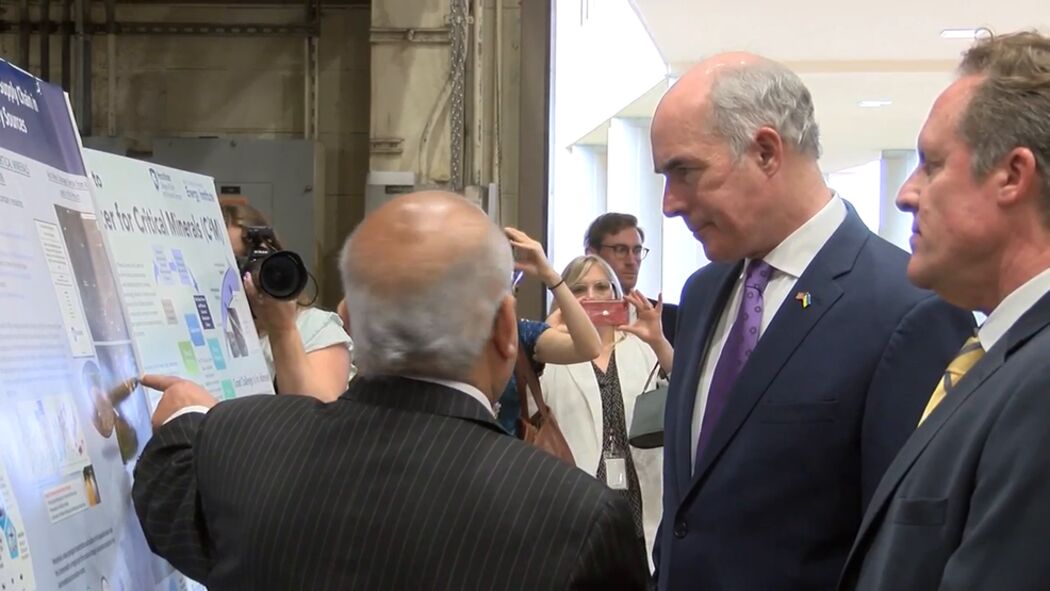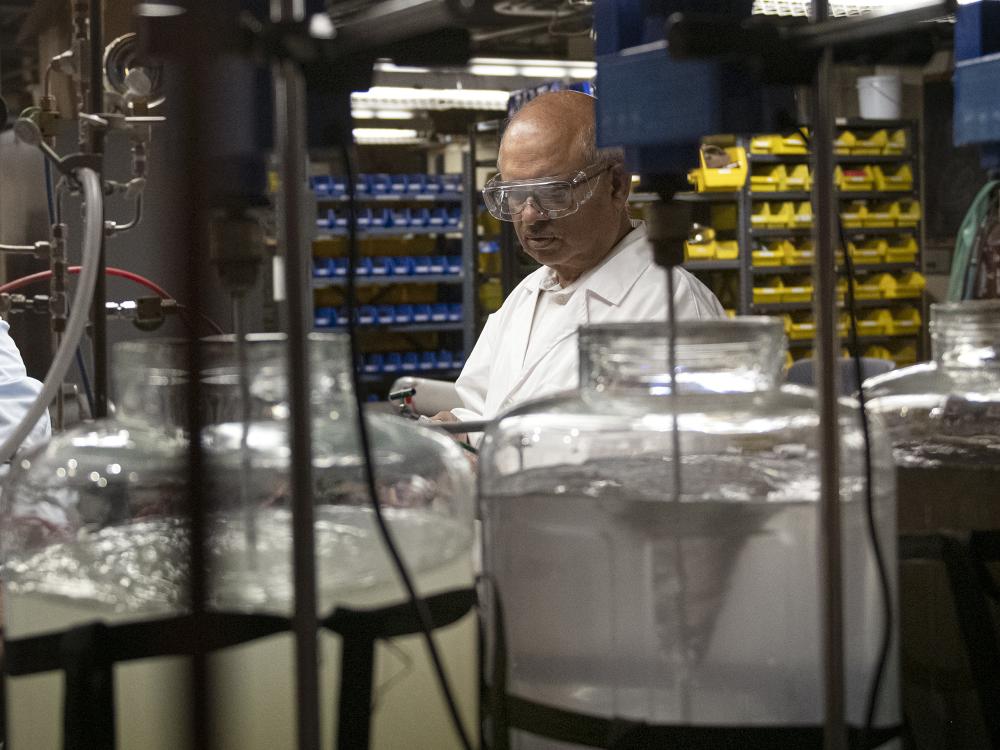eNews 2023
Mussels inspire an eco-friendly way to extract critical rare earth elements
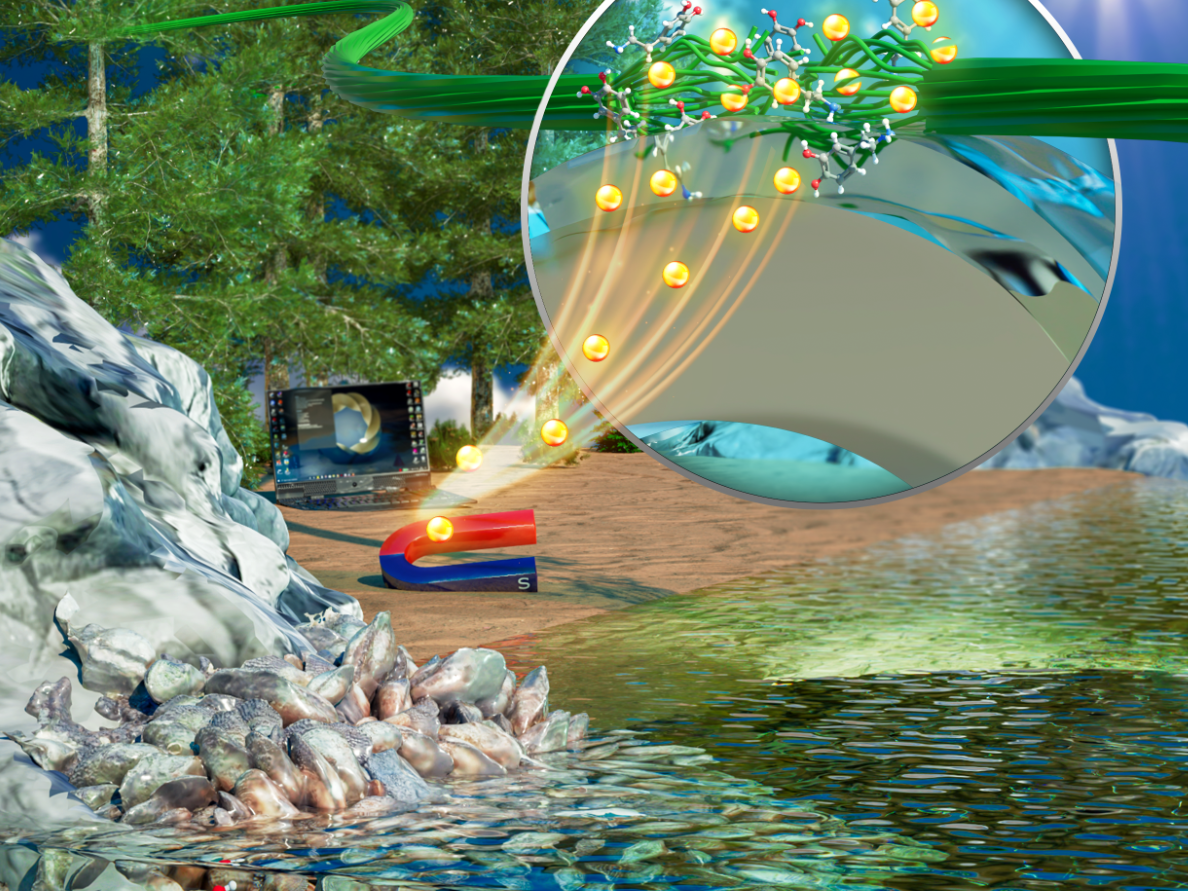
UNIVERSITY PARK, Pa. — There is a conundrum around rare earth elements (REE). They play a key role in clean energy, vital to the production of lightweight, efficient batteries and essential components in wind turbines. Conversely, conventional extraction of these elements raises environmental concerns ranging from habitat destruction to water and air pollution to the high amount of energy needed to extract and process these elements.
To solve this quandary, Penn State researchers found inspiration under the sea: mussel stickiness. By mimicking this natural glue, the researchers developed a new mussel-inspired nanocellulose coating (MINC) that has demonstrated what they call a “remarkable, even surprising” ability to recover REEs from secondary sources such as industrial wastewater without using a high amount of energy.
They published the work on July 31 in ACS Applied Materials and Interfaces. It will feature on the journal’s front cover in September.
Mussels have a remarkable ability to adhere to surfaces underwater thanks to the adhesive properties of catechol-based molecules found in mussel proteins. The MINC mirrors this by consisting of ultra-tiny hairy cellulose nanocrystals with uniquely sticky properties. The MINC is applied to a substrate via a technique called dopamine-mediated ad-layer formation. A chemical reaction enables the MINC to form a thin layer of molecules on a surface, making it capable of sticking to a broad range of substrates.
“The MINC approach offers a sustainable and eco-friendly alternative to conventional extraction methods, minimizing the environmental footprint and contributing to the long-term availability of critical elements,” said lead author Amir Sheikhi, assistant professor of chemical engineering and of biomedical engineering, by courtesy.
The researchers focused on applying MINC to extract a particular REE, neodymium. The U.S. Department of Energy listed neodymium as a critical material due to supply shortages and its high impact on emerging sustainable technologies such as electric car batteries and magnets used in powering systems for electric vehicles and wind turbines. However, the “rare” part of rare earth elements is especially true with neodymium, as the lack of ready-to-extract supply of this critical element forces extraction of it from secondary sources such as industrial wastewater recycling. This can be both inefficient and energy intensive, according to Sheikhi.
“The limited global supply of neodymium and the environmental impact of current extraction methods necessitate the development of eco-friendly and sustainable approaches for REE recovery,” Sheikhi said, explaining that conventional extraction techniques use significant amounts of toxic chemicals, such as kerosene, to purify the target element. “Prior rare earth extraction methods have utilized adsorbents such as alginate gels, phosphorus sol-gel materials, nanotubes and porous carbon, but these techniques demonstrate limited efficiency.”
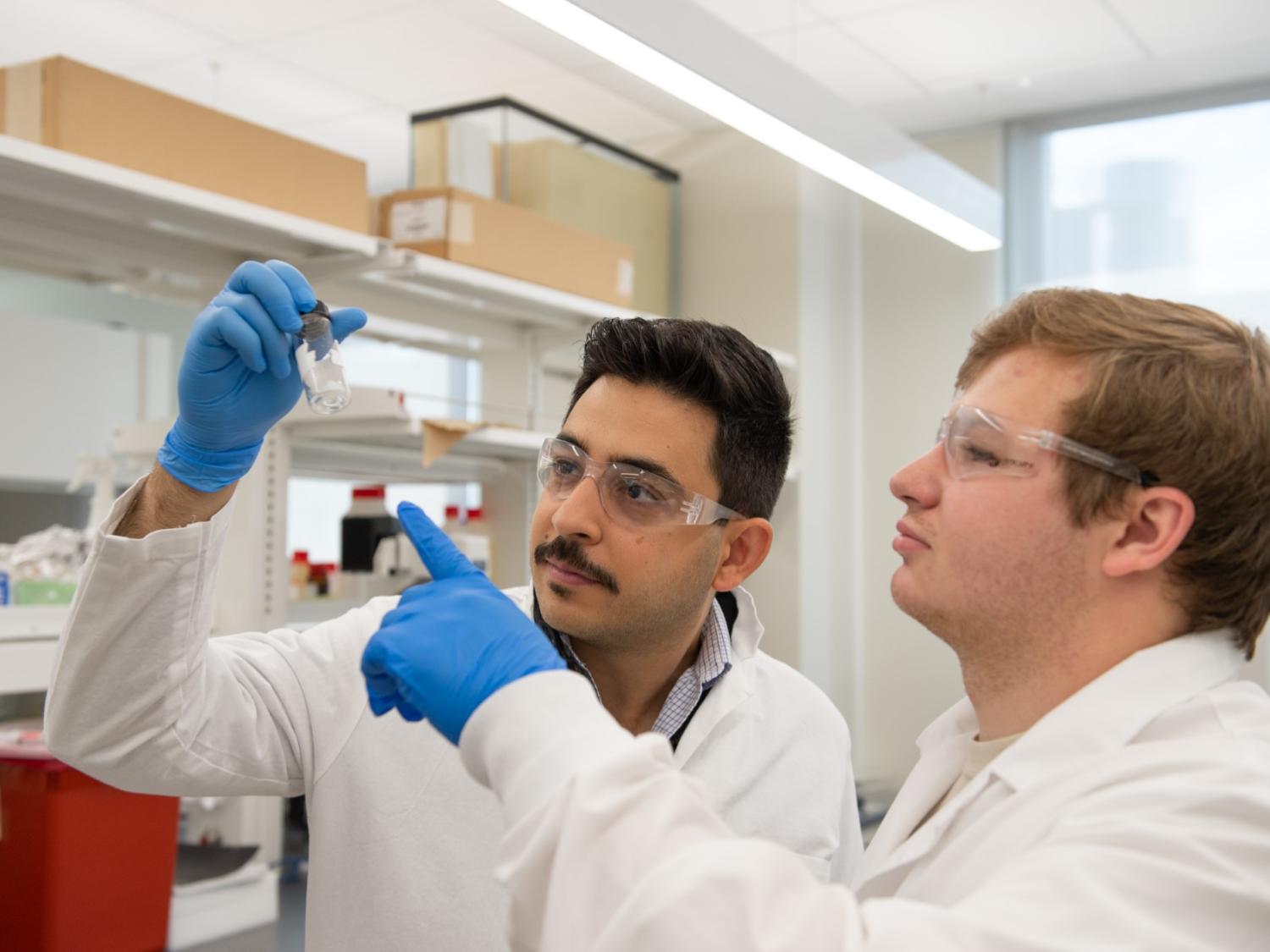
Read on Penn State News
Mission critical: To get critical minerals and rare earth metals from coal waste
Critical minerals, including rare earth metals, are vital components of our consumer goods, national defense, and emerging green-energy technologies, but the U.S is heavily dependent on imports for an adequate supply. Penn State researchers are looking for ways to tap Pennsylvania's coal mine waste as a domestic source for these materials and reduce environmental pollution at the same time.
Think of any technology that’s part of a clean-energy economy: electric vehicles, wind turbines, solar panels. Think of the devices we depend on for work and play: smart phones, computer hard drives, flat screen monitors, rechargeable batteries. Or the systems that undergird our national defense: lasers and missile guidance, radar and sonar.
All of these depend on critical minerals.
The U.S. Geological Survey (USGS) currently designates 50 minerals as critical to the U.S. economy or its national security or both. That number includes the so-called rare-earth elements — the 15 lanthanide metals at the bottom of the periodic table plus scandium and yttrium — along with the battery metals lithium, cobalt, nickel, and manganese, as well as platinum, aluminum, and graphite, among others.
With the accelerating shift toward renewable energy, need for these materials is rising sharply. By 2030, according to Bloomberg, demand for nickel and aluminum will increase 14-fold, with graphite and lithium not far behind.
“The problem is we are highly dependent on other countries for both production and processing,” said Sarma Pisupati, professor of energy and mineral engineering and director of the Center for Critical Minerals at Penn State. According to USGS, the U.S. imported almost all the rare earth elements it used in 2018, with 80% coming from China. Department of Energy figures show over 50% import reliance for the remaining critical minerals, and 100% reliance for 14 of them.
This dependence was a serious concern even before the COVID pandemic revealed major gaps in U.S. supply chains, and mineral-rich Russia’s invasion of Ukraine has only exacerbated the problem. The federal government has responded with executive orders directing increased efforts to find and develop domestic sources, but new mining poses steep environmental and political costs, and primary deposits of many of these minerals are limited in the U.S.
“There is a need for secondary resources,” said Pisupati. Fortunately, he added, “Pennsylvania is rich in these resources.” Pennsylvania’s legacy as a coal-mining state, he said, could be to turn a problem into an important part of the solution.
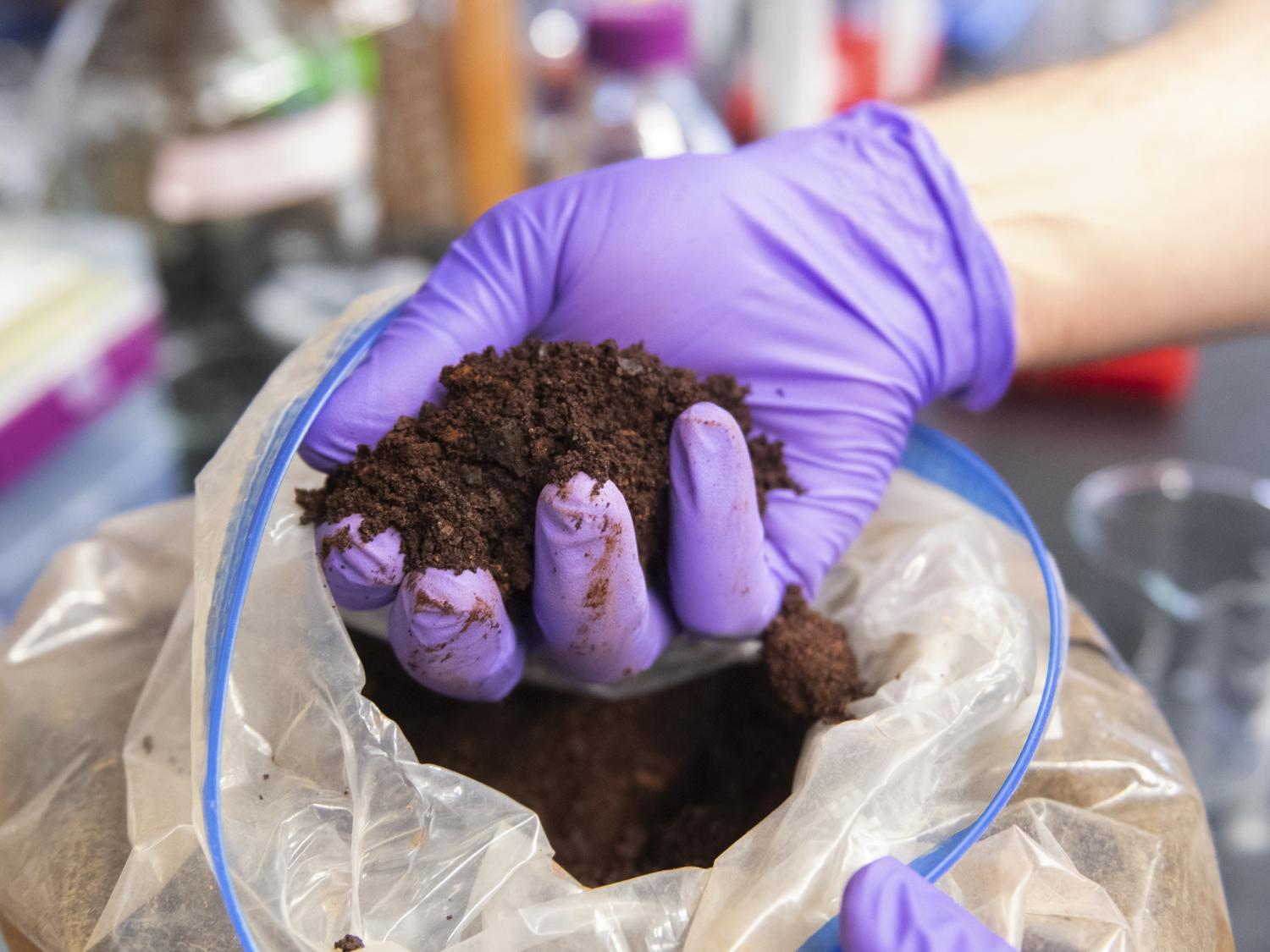
Decades of industrial mining have left behind literal mountains of waste across the Commonwealth, Pisupati explained. Mine tailings, sludge ponds and acid mine drainage are an ongoing environmental concern. But locked inside those waste streams are significant quantities of rare earth elements and other critical minerals, he said. All we have to do is figure out how to safely and economically extract them.
“We already have to treat this stuff before releasing it into the environment,” Pisupati said. “By modifying existing treatment processes, we can address multiple problems: getting the material we need for national security and remediating long-standing environmental problems at the same time. If we do it right, we can create jobs and an economic boost for the communities coal has left behind.”
Penn State researchers identified rare earth elements in coal 70 years ago
Penn State’s involvement in the state’s coal-mining industry traces back to the 19th century. The University established a mining engineering degree program in 1890, training graduates in mine mechanization and safety. Its programs in mining geology, mineral processing, and extractive metallurgy have long been recognized among the best in the world.
“By modifying existing treatment processes, we can address multiple problems: getting the material we need for national security and remediating long-standing environmental problems at the same time.”
Sarma Pisupati, director, Center for Critical Minerals at Penn State
University experts were early to recognize the untapped potential in coal byproducts. In 1952, Edward Steidle, dean of what was then the College of Mineral Industries, wrote, “By the year 2000 we will not be wasting our coal ash, in which geochemists have shown there is a notable concentration of rare elements, such as germanium and rare earths. We will be recovering these elements.”
Today, Penn State’s research and teaching capabilities span the entire supply chain for critical minerals, from resource exploration and evaluation to raw material processing to extraction and refining of metals to the manufacturing of end products like lithium-ion batteries, magnets, and advanced carbon fibers. “No other university has that breadth,” said Pisupati.
The Center for Critical Materials that he directs was formed by the College of Earth and Mineral Sciences in 2019 to take full advantage of this expertise. Its research core now includes over 25 faculty from departments across Penn State, including geosciences, energy and mineral engineering, materials science and engineering, chemistry, chemical engineering and energy business and finance. A memorandum of understanding signed in 2020 with the Colorado School of Mines further expands that reach.
Last year Penn State was tapped by the U.S. Department of Energy to lead a regional consortium to assess and catalog critical mineral resources in Pennsylvania and surrounding states, to develop strategies to recover these materials, and to identify potential gaps in the supply chain. The Consortium to Assess Northern Appalachian Resource Yield, or CANARY, is part of a national effort to ramp up domestic production.
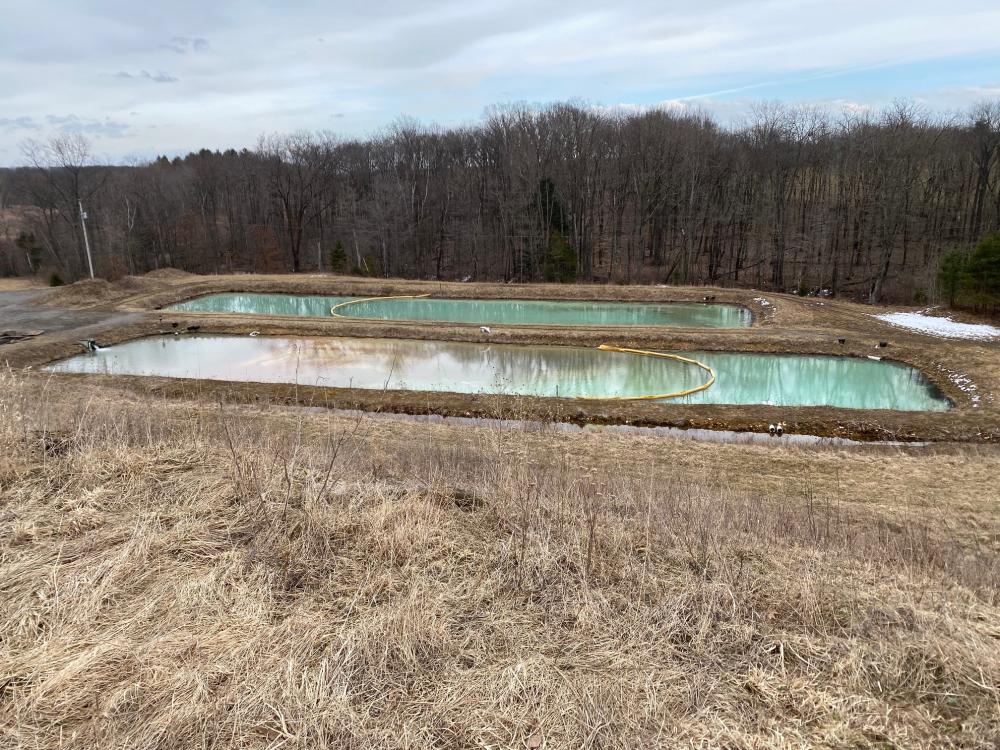
“Critical mineral recovery from coal waste and its associated environmental remediation present a tremendous opportunity for the college, university, Commonwealth and nation,” says Lee Kump, dean of the College of Earth and Mineral Sciences. “Our research will guide the development of advanced green technologies that will ensure that this new industry will be a boon for the Appalachian economy and environment and create a domestic supply chain of minerals needed for energy transition to renewables, high-tech manufacturing, and national security.”
Locating rare earth minerals in abandoned mines
Much like other critical minerals, “Rare earths aren’t exactly rare,” said Barb Arnold, professor of practice in mining engineering and CANARY’s managing director. “But they’re rarely found in high concentrations, so mining for them often isn’t economically viable.”
In places like Pennsylvania, over the millions of years of coal’s formation, cations of various metals attached themselves to organic peat. “Some of the heavy stuff seems to have settled down into clays that were underlying the peat bogs,” Arnold said. “That’s why we have all these elements present in coals.”
Over decades of mining, these minerals were routinely tossed aside with the rest of the detritus. Now, however, coal’s waste streams hold enough potential value to be worth exploring. Acid mine drainage, the acidic runoff from abandoned mine lands, impacts over 5,500 miles of the state’s waterways. This literal waste stream, along with the acidic sludge held in treatment ponds, the vast piles of coal refuse, and the fly ash associated with coal-fired power plants, is a potential source of critical minerals.
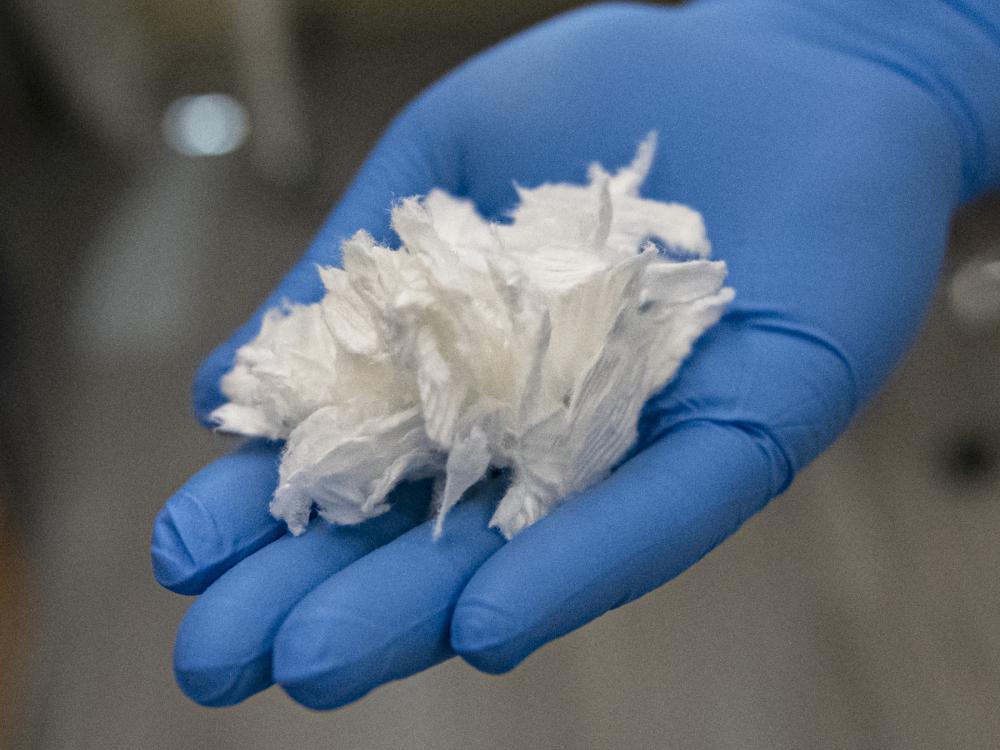
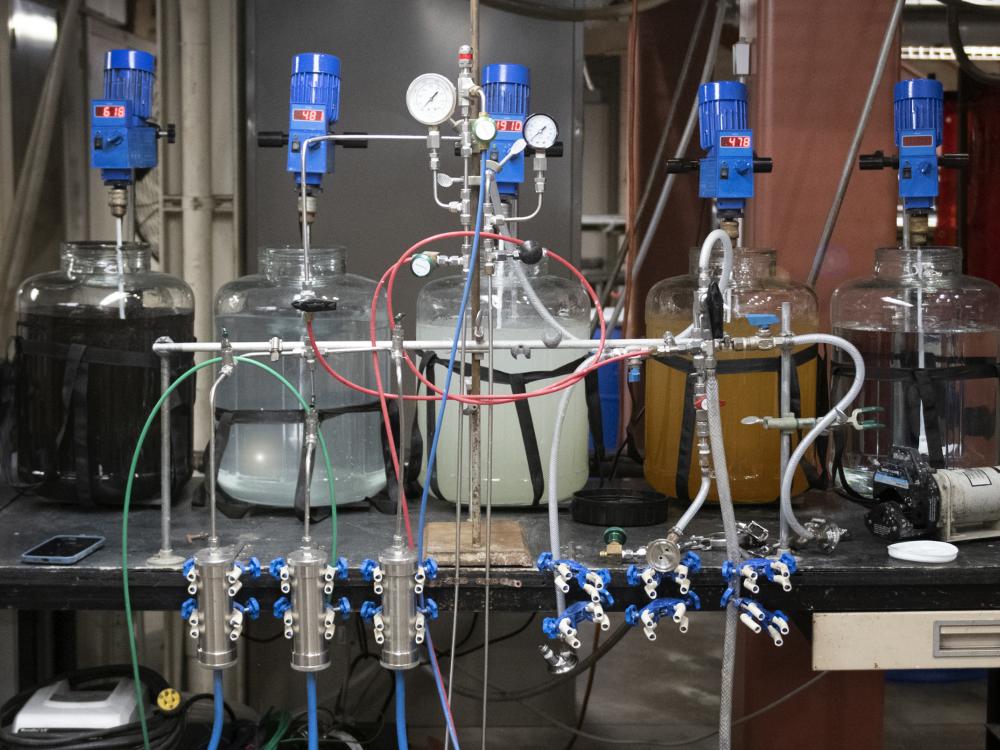
The first step is assessing what’s out there. Arnold and the rest of the CANARY team, including Pete Rozelle, a doctoral alum and former project manager for the DOE who is now an adviser for the College of EMS, have begun the task of evaluating concentrations of cobalt, lithium, manganese, nickel, and rare earths likely to be present around the state. That means digging into the history of mining, scouring century-old government records and other publicly accessible databases as well as University archives. “We have a head start,” Rozelle said, “because Penn State was a leader in the U.S. in inventorying mine refuse in the 1960s.”
Coal mines are not the only object of interest. Mining for metals, including chromium, zinc, iron, and nickel, has been ongoing in Pennsylvania for 200 years, up until the 1980s. Waste dumps left behind by the metallurgical and metal-processing industries are another potential source of critical minerals.
Analyzing historical data brings special challenges, Arnold said. Assays relied on back in the day may not yield accurate results by today’s standards. “The USGS has qualified some of the numbers in its historical data,” she said. “In some cases, we have to go back and do our own assessment.”
Still, early results have been encouraging. In November 2021 the team released a preliminary estimate of the amounts of cobalt and manganese present in mine dumps and acid mine treatment ponds around the state. Both metals are essential ingredients in the lithium-ion batteries that power electric vehicles, and for both, the U.S. is highly dependent on imports from countries including the Democratic Republic of the Congo and China.
Pennsylvania once led the nation in cobalt production, Rozelle noted. “It was a byproduct of the steel industry.” So it was no surprise to find that there is as much of the stuff locked up in the state’s mine waste — some 52,000 metric tons — as exists in the entirety of U.S. primary reserves.
The same report estimates over half a million metric tons of manganese, with additional amounts of both metals leaking into waterways via acid mine drainage every year. Recovery and sale of these materials, Pisupati said, could not only provide a domestic source for the battery industry, but could help offset the costs of reclaiming abandoned mine lands and restoring polluted streams.
Recovering critical and rare earth elements from mine waste and e-waste
Accessing these dormant resources, however, will require bold advances in mineral processing — finding ways to make extraction and separation of the desired materials both environmentally friendly and economically feasible. It’s a tall order, which is why Pisupati and his colleagues are exploring every possible avenue.
Read more on Penn State News
A protein mines, sorts rare earths better than humans, paving way for green tech

UNIVERSITY PARK, Pa. — Rare earth elements, like neodymium and dysprosium, are a critical component to almost all modern technologies, from smartphones to hard drives, but they are notoriously hard to separate from the Earth’s crust and from one another.
Penn State scientists have discovered a new mechanism by which bacteria can select between different rare earth elements, using the ability of a bacterial protein to bind to another unit of itself, or “dimerize,” when it is bound to certain rare earths, but prefer to remain a single unit, or “monomer,” when bound to others.
By figuring out how this molecular handshake works at the atomic level, the researchers have found a way to separate these similar metals from one another quickly, efficiently, and under normal room temperature conditions. This strategy could lead to more efficient, greener mining and recycling practices for the entire tech sector, the researchers state.
“Biology manages to differentiate rare earths from all the other metals out there — and now, we can see how it even differentiates between the rare earths it finds useful and the ones it doesn’t,” said Joseph Cotruvo Jr., associate professor of chemistry at Penn State and lead author on a paper about the discovery published today (May 31) in the journal Nature. “We’re showing how we can adapt these approaches for rare earth recovery and separation.”
Rare earth elements, which include the lanthanide metals, are in fact relatively abundant, Cotruvo explained, but they are what mineralogists call “dispersed,” meaning they’re mostly scattered throughout the planet in low concentrations.
“If you can harvest rare earths from devices that we already have, then we may not be so reliant on mining it in the first place,” Cotruvo said. However, he added that regardless of source, the challenge of separating one rare earth from another to get a pure substance remains.
“Whether you are mining the metals from rock or from devices, you are still going to need to perform the separation. Our method, in theory, is applicable for any way in which rare earths are harvested,” he said.
All the same — and completely different
In simple terms, rare earths are 15 elements on the periodic table — the lanthanides, with atomic numbers 57 to 71 — and two other elements with similar properties that are often grouped with them. The metals behave similarly chemically, have similar sizes, and, for those reasons, they often are found together in the Earth’s crust. However, each one has distinct applications in technologies.
Mining PA Conference offers outlooks from leaders in mining
UNIVERSITY PARK, Pa. — Pennsylvania mining industry leaders, government representatives and faculty will speak at the inaugural Mining PA Conference, to be held Aug. 14-16 at the Penn Stater Hotel and Conference Center in State College.
The conference offers the opportunity for mine and processing plant operators, equipment suppliers, government agencies, professional societies and industry advocates to connect with one another and address challenges and opportunities in health and safety, environmental protection, critical minerals and new technologies.
The keynote speakers will include:
- Steve G. Sawyer Jr., director of the National Institute of Occupational Safety and Health’s (NIOSH) Pittsburgh Mining Research Division, who will present “NIOSH Mining Health and Safety Research in Pennsylvania and Beyond."
- Jessica Mullen, a technology manager at the U.S. Department of Energy’s National Energy Technology Laboratory.
- Jim Haughey, Komatsu’s business development director for industrial minerals, who will present “The Future of Mining Machines – Innovations and Technologies.”
- Rich Wagner, director of the Bureau of Mine Safety at the Pennsylvania Department of Environmental Protection.
Additional sessions will include the following:
- "Mental Health and Miners," Arthur Wolfson, Fisher Phillips LLC.
- "Blasting-induced stress wave and its implication on the pillar failure for stone mines," Shimin Liu, Penn State.
- "Application of water infusion through J-Hook horizontal drilling and its implication for gas drainage and dust control in underground mines," Ang Liu, Penn State.
- "Self-escape KSAs: A Case Study of CONSOL Energy’s Enhanced Training Program – Realism and Mineworker Confidence," Sekhar Bhattacharyya, Penn State.
- "Full Scale Demonstration of Somerset Sub325 Dewatering Centrifuge: Discussion of testing procedures and results from multiple locations, applications, and industries," Mike Barish, Somerset International.
- "Revalorization of Mine Tailings," Barbara J. Arnold, Penn State.
- "Optimum Location for AMD Treatment Facility for REE and CM Extraction in Shamokin, PA," Steve Chrismer, Shamokin Creek Restoration Alliance.
- "Ongoing research efforts on the extraction of critical elements from primary and secondary sources," Mohammad Rezaee, Penn State.
- "Health and safety analysis for Critical Mineral Extraction using MSHA reported data," Shimin Liu, Penn State.
- "Evaluation of Critical Metals in Pennsylvania Coal Mine Drainage," John M. Memmi, consultant and former deputy director and policy director, Pennsylvania Senate.
- "Highwall Stabilization and Ground Control – Underground Mine Design," Carolyn McCannon, RESPEC.
- "Application of a novel gas fracturing technology for accelerative gas drainage in coal mines and its potential of PA coal mine gas drainage," Shimin Liu, Penn State.
- "Automation and Analytics – Assisting operators in R&P mining," Toby Cressman, Komatsu.
- "Using CFD modeling technique to mimic a diesel fuel combustion event in an underground mine," Ashish Kumar, Penn State.
The cost is $325 for the full conference, $175 for one day, or $150 for students. Interested attendees can register here.
Senator Robert Casey tours lab
Photo of the Day
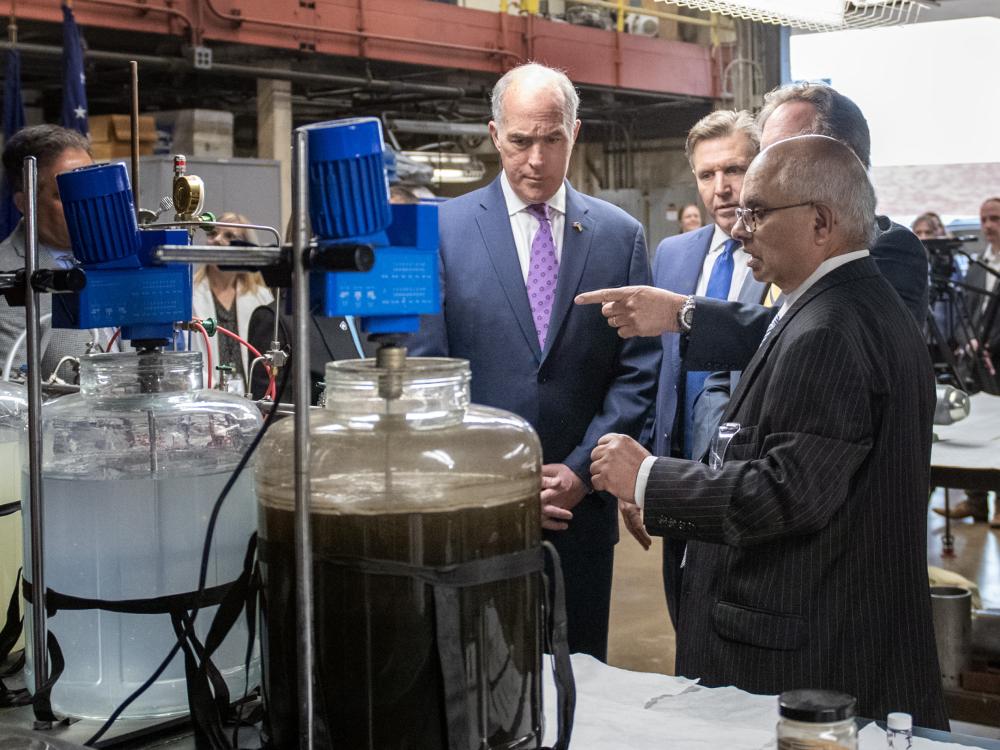
U.S. Senator Robert Casey was given a tour of Penn State's Coal Utilization Laboratory led by the Director of the Center for Critical Minerals Sarma V. Pisupati on the morning of April 6. The Coal Utilization Lab is part of Penn State's Earth and Mineral Sciences Energy Institute, and is focused on solving challenges related to fossil fuels and the exploration of new energy technologies.
Sen. Casey visits Penn State, highlights $2.1 million drainage research
STATE COLLEGE, Pa (WTAJ) — U.S. Senator Bob Casey (D-PA) visited Penn State to highlight a $2.1 million GRANT? for acid mine drainage research
On Thursday, Casey visited Penn State University’s Center for Critical Minerals to showcase the $2.1 million of federal funding for the fiscal 2023 year. During his visit, he was joined by Sarma Pisupati, Director of the Penn State Center for Critical Minerals, Jesse Gill, Penn State Master’s Degree Student in Energy and Mineral Engineering and Lora Weiss, Senior Vice President for Research at Penn State.
Casey showcased the $2.1 million for the fiscal 2023 year in federal funding that will help “scale up” a novel process that Penn State scientists developed. The process allows scientists to recover critical minerals from acid mine drainage (AMD) byproducts.
“It was great to learn about this novel process that Penn State has undertaken that did this,” Casey said. “This funding will support to make sure that we are able to use the benefit we have of all of these natural resources in our state. To derive from that, kind of rare earth minerals that, frankly, China dominates. China dominates this market.”
Casey went on to mention that this funding will help Penn State move forward with its research and could help grow the economy, as well as protect our environment.
Sen. Casey touts PSU rare earth element research as critical to competing with China
UNIVERSITY PARK, Pa. (WJAC) — U.S. Sen. Bob Casey (D) stopped by the Penn State Center for Critical Minerals on Thursday to highlight the federal funds they received to further develop a "novel" technique to recover rare earth elements from acid mine drainage.
Douglas Braff toured the lab, speaking with Casey, students, and faculty about the potential.
Rare earth elements are critical to a wide scope of technologies: ranging from devices as big as electric cars, to those as small as smartphones. However, amid growing tensions between the United States and China in the tech sector, access to rare earth elements has become key.
"This is about the economy of our commonwealth, and our country," Casey tells a those at the Center. "This is also about our national security."
This project received $2.1 million through the FY 2023 funding bill passed in December, along with over $100 million going to other projects across Pennsylvania.
Something Penn State University officials touched upon — like Center's director, Sarma Pisupati — is that Pennsylvania has "many existing environmental and energy waste resources, due to past coal mining activities."
"There are 220 million tons of identified coal refuse, over 2,400 miles of Pennsylvania streams that do not meet water quality standards, due to acid mine drainage from Pennsylvania's legacy coal mine communities," Pisupati says. "These resources have lot of critical minerals the country heavily relies on and imports today for a sustainable energy future."
Younes Hekarian, a PhD student at the Penn State Department of Engineering, tells 6 News, "The problem is that ... there is few primary resources of critical element — including cobalt, manganese — in the U.S."
Now they can extract those critical elements from acid mine drainage.
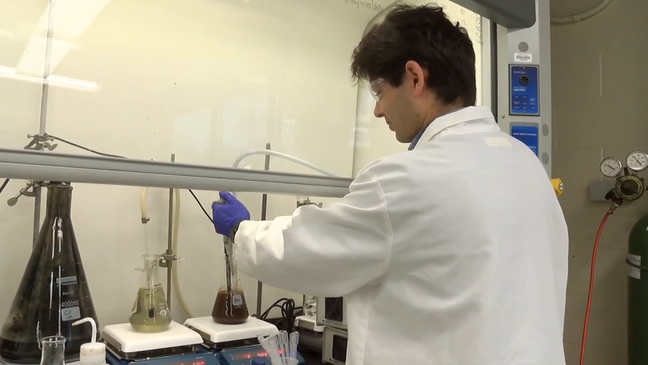
As for the actual process, one of the project's faculty leaders tells us its novelty lies in its simplicity.
Faculty of Energy and Mineral Engineering at Penn State
"We modify the acid mine drain treatment process in a way that, while treating for the environmental compliance, we can selectively recover multiple critical elements that are essential for the new technology and clean energy transition as well," says Dr. Mohammad Rezaee, who is a faculty of Energy and Mineral Engineering at Penn State.
The dean of the College of Earth and Mineral Sciences at Penn State, Lee Kump, tells us there is a stakeholder group of industries across the commonwealth and the country interested in commercializing this technology that Penn State is developing.
"The federal investment in this project now, is just to take the risk down a little bit ... so that the industries that are waiting to take advantage of this can feel comfortable about taking this to the plant scale," he notes.
President Joe Biden signed the "CHIPS and Science Act" into law last August, which allocated about $280 billion for boosting the research and domestic manufacturing of semi-conductors. All of this was done primarily with the goal of competing against China, since semi-conductors are vital to U.S. national security.
6 News asks Casey if he thinks projects like this at Penn State play into the same aspect of national security as the CHIPS Act.
"I think it's a very similar— a very similar theme that we cannot allow other countries, especially China, to dominate the— the marketplace or in this case, the— have control of those rare earth minerals," he replies. "We've gotta take action."
Casey continues: "And legislative action is one area for progress. But, having a research university like Penn State be the university that has this, this kind of a novel process, which will give us that advantage in economic advantage and environmental advantage as well as the National Security Advantage, is— is really inspiring to see."
USGS scientist to discuss critical mineral commodities at 2023 Shoemaker Lecture

UNIVERSITY PARK, Pa. — Elisa Alonso, a physical scientist at the U.S. Geological Survey (USGS), will give the 2023 G. Albert Shoemaker Lecture in Mineral Engineering at Penn State. Her talk, “Rare Earth Elements are not the only critical mineral commodities,” will be held at 3 p.m. on Friday, April 14, in the Hub-Robeson Center’s Freeman Auditorium and online via Zoom. A reception will follow the lecture at 4 p.m. The event is free and open to the public.
Alonso’s talk will focus on the supply and demand analysis of the non-fuel critical mineral commodities identified by the director of USGS as essential to the Unites States’ economy and defense, yet most of these commodities are mostly imported. Alonso will discuss the need to broaden the focus beyond the rare earth elements, the 17 metallic elements that are commonly used in the electronics and automotive industries, to include these additional mineral commodities and how further understanding is fundamental to assessments of their criticality.
Alonso joined USGS in 2020, and her work focuses on supply chain analysis and evaluating resource availability for critical materials such as rare earth elements. Prior to joining the USGS, Alonso was a strategic materials analyst supporting the Defense Logistics Agency Strategic Materials and Oak Ridge National Laboratory, where she collaborated with numerous government agencies to assess more than 200 specialty and commodity materials for potential shortfalls in national emergency plan
Penn State's Center for Critical Minerals to receive $2.1M for pilot program
These minerals are prevalent in essential components of everyday life, including batteries, cellphones, automobiles, appliances and electronic devices. Critical minerals also play a central role in defense and homeland security applications, making them vital to national security and domestic economic growth.
Funding for the pilot system was supported by U.S. Rep. Guy Reschenthaler (R-Pa.), U.S. Rep. Glenn “GT” Thompson (R-Pa.) and U.S. Sen. Bob Casey (D-Pa.).
“I secured this community project funding for Penn State because this cutting-edge project to extract critical minerals from acid mine drainage presents Pennsylvania with a rare opportunity to assume national leadership in an industry growing more important by the day,” said Casey. “Thanks to $2.1 million from the fiscal year 2023 spending bill, Penn State can move forward with innovative research that could help grow our economy, protect our environment, and safeguard our national security.”
The pilot system will help extract these much sought-after resources, provide environmental benefits, and show the viability of a full-scale plant to help Pennsylvania become a leader in this burgeoning industry.
Mining PA Registration Now Open!
Join Penn State Mining Engineering faculty and students and colleagues from the mining industry in Pennsylvania as we address challenges and opportunities in health and safety, environmental protection, critical minerals, and new technologies. Let’s celebrate mining in Pennsylvania!
Mine and processing plant operators, equipment suppliers, government agencies, professional societies, and industry advocates will gather at the Penn Stater for a reception on May 8 followed by two days of dynamic speakers and opportunities to network. We expect participation from PA DEP, NIOSH, US DOE NETL, SME Pittsburgh Section, SME Penn Anthracite Section, PACA, PA Coal Alliance, and others.

